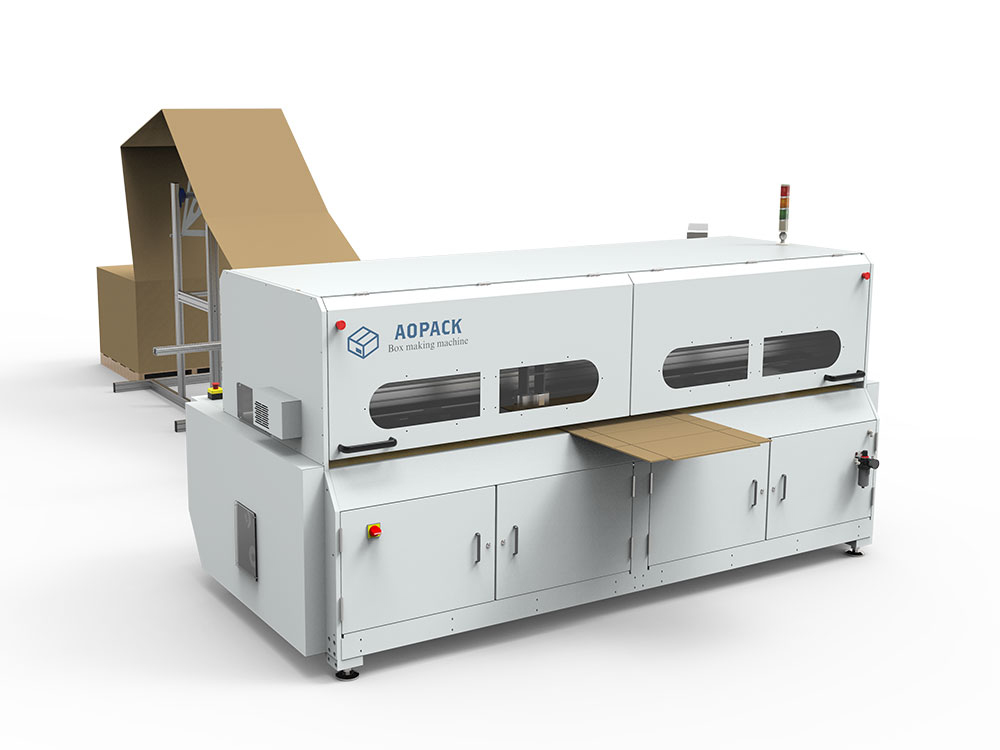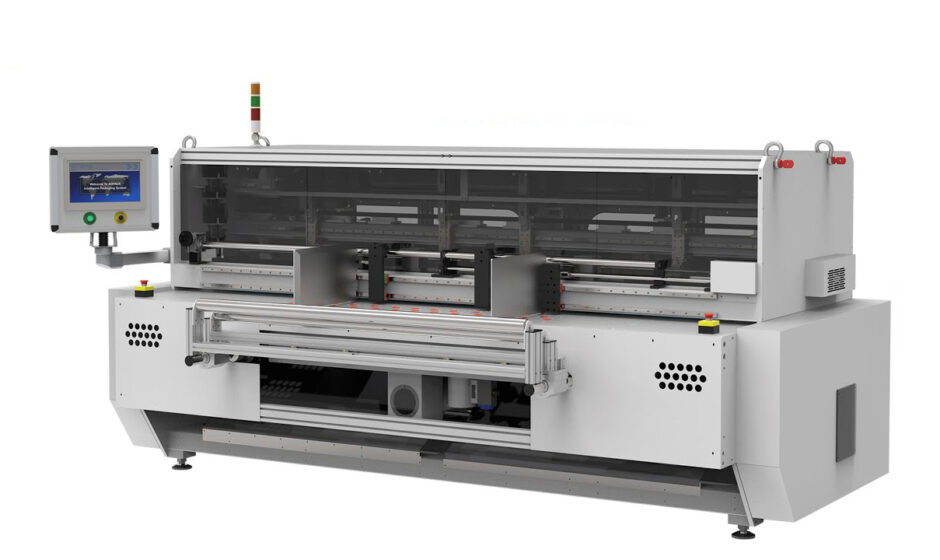Box-making machines are essential for businesses that rely on packaging for shipping, storing, or selling products. These machines automate the process of producing cardboard boxes, saving time and money. However, like any piece of equipment, box-making machines can experience technical problems that interrupt production. Understanding how to troubleshoot these issues can minimize downtime and maintain efficient operations.
This guide covers the most common issues that arise when operating a box machine and how to troubleshoot and resolve them.

1. Misaligned or Inconsistent Cuts
Symptoms:
- Boxes have uneven edges.
- Cutting lines are off from the intended design.
- Flaps are not symmetrical.
Possible Causes:
- The cutting blades may be dull or damaged.
- Incorrect calibration or setup of the machine.
- Misalignment in the cardboard feeding system.
- The cardboard sheets are not placed properly in the machine.
Troubleshooting Steps:
- Check the Blades: Inspect the cutting blades for dullness or damage. Dull blades result in uneven or ragged cuts. If necessary, sharpen or replace the blades.
- Recalibrate the Machine: Ensure that the machine is properly calibrated for the current box design. Follow the manufacturer’s instructions for adjusting the cutting guides and blade height.
- Align the Cardboard Feed: Make sure the cardboard sheets are fed straight into the machine. Adjust the feed tray or guides if the sheets are consistently misaligned.
- Test with a New Sheet: Run a new sheet of cardboard through the machine to confirm that the adjustments have resolved the issue.
2. Boxes Not Folding Correctly
Symptoms:
- Boxes are not folding along the crease lines.
- The fold is uneven, resulting in misaligned edges or overlapping flaps.
- Boxes collapse or fail to maintain their structure after folding.
Possible Causes:
- Creasing pressure is too low or too high.
- The cardboard is not properly creased or the creases are too shallow.
- Incorrect settings for the folding unit.
- The cardboard is too thick or too stiff for the current folding setup.
Troubleshooting Steps:
- Adjust Creasing Pressure: Check the creasing unit and adjust the pressure to ensure the crease is deep enough for easy folding without tearing the cardboard. The correct pressure will depend on the type and thickness of the cardboard being used.
- Inspect the Creasing Mechanism: Ensure that the creasing blades or rollers are clean, sharp, and functioning properly. Dirty or worn-out parts can lead to improper creasing.
- Recalibrate the Folding Unit: Adjust the folding settings to match the dimensions of the box. Make sure the folding arms or rollers are positioned correctly to fold along the crease lines.
- Use Appropriate Cardboard: If the cardboard is too thick or rigid, consider adjusting the machine settings to accommodate the material or use a different grade of cardboard.
3. Glue Not Applying Correctly
Symptoms:
- Boxes are not sealing properly.
- Glue is unevenly distributed or dripping.
- Glue fails to hold the flaps together, causing boxes to open up during use.
Possible Causes:
- The glue applicator is clogged or not working properly.
- Incorrect glue temperature or viscosity settings.
- The glue tank is running low or empty.
- Excessive glue application causes overflow or drips.
Troubleshooting Steps:
- Clean the Glue Applicator: Clogs in the glue nozzle or applicator can lead to uneven glue application. Clean the glue delivery system thoroughly, removing any dried glue that could be blocking the nozzle.
- Check Glue Temperature and Viscosity: Ensure the glue and viscosity of your machine are at the correct temperature. Adjust the settings according to the glue manufacturer’s recommendations.
- Refill the Glue Tank: If the glue supply is low, refill the tank and check for any air bubbles that may have formed, which can interfere with proper glue flow.
- Calibrate the Glue Amount: Adjust the amount of glue being applied to avoid overflow or weak adhesion. Test the glue application on a sample box to verify the correct settings.

4. Jamming in the Cardboard Feed System
Symptoms:
- Cardboard sheets get stuck or jammed in the feed section.
- Boxes are produced with tears, dents, or bent edges due to improper feeding.
- Production halts frequently due to feed errors.
Possible Causes:
- Misalignment in the feed tray or guide system.
- Cardboard sheets are too thick, bent, or warped.
- Improper feeding speed or settings.
- Foreign objects or debris in the feed path.
Troubleshooting Steps:
- Check for Obstructions: Remove any debris, dust, or foreign objects from the feed tray or conveyor system. Even small obstructions can cause significant jamming.
- Align the Feed System: Ensure that the feed guides are properly adjusted to allow the cardboard sheets to move smoothly through the machine. Adjust the feed rollers or belts if necessary.
- Inspect the Cardboard Sheets: Check the quality of the cardboard being used. Warped or bent sheets may not feed properly and can cause jams. Use flat, properly cut sheets for optimal performance.
- Adjust the Feeding Speed: If the machine is set to feed too quickly or too slowly, it may cause jamming. Fine-tune the feeding speed based on the thickness and type of cardboard.
5. Machine Overheating or Power Failure
Symptoms:
- The machine shuts down unexpectedly during operation.
- Overheating warnings or alarms are triggered.
- Power surges or fluctuations.
Possible Causes:
- The machine is running for extended periods without cooling.
- Dust or debris in the machine’s cooling system.
- Electrical or wiring issues.
- Faulty power supply or surge protectors.
Troubleshooting Steps:
- Inspect the Cooling System: Check the fans, vents, and cooling mechanisms to ensure they are free of dust and debris. Clean them regularly to prevent overheating.
- Allow for Cooling Periods: If the machine is overheating, give it time to cool down between extended production runs.
- Check Electrical Connections: Inspect the machine’s wiring and power supply for any loose connections or damage. Ensure the machine is connected to a stable power source with proper surge protection.
- Consult the Manufacturer: If overheating continues or the machine experiences repeated power failures, consult the manufacturer or a technician to inspect the internal components for damage or malfunction.
6. Inconsistent Box Dimensions
Symptoms:
- Boxes have inconsistent measurements.
- Flaps, sides, or dimensions do not match the intended design.
- Boxes fail to meet quality control standards.
Possible Causes:
- Calibration issues with the cutting or creasing units.
- Wear and tear on cutting tools or blades.
- Incorrect settings in the design interface.
- Variations in the quality or thickness of the cardboard.
Troubleshooting Steps:
- Recalibrate the Machine: Check all settings related to box dimensions, including cutting, creasing, and folding units. Make sure the machine is properly calibrated for the specific box design.
- Replace Worn Components: Worn blades, rollers, or guides can lead to inconsistent dimensions. Regularly inspect and replace any parts that are showing signs of wear.
- Ensure Consistent Material Quality: Inconsistent cardboard thickness or quality can affect the final product’s dimensions. Use high-quality, uniform cardboard for best results.
- Verify Digital Settings: If your machine is computer-controlled, double-check the input parameters for each box design to ensure there are no errors in the dimensions.

7. Conclusion
By understanding how to troubleshoot common issues in a box-making machine, you can prevent costly downtime, improve production efficiency, and ensure that your boxes meet quality standards. Regular maintenance, timely repairs, and careful monitoring of the machine’s performance will keep your operations running smoothly. Following the steps outlined in this guide will help you quickly identify and resolve problems, allowing you to maintain a successful and productive box-making business.



